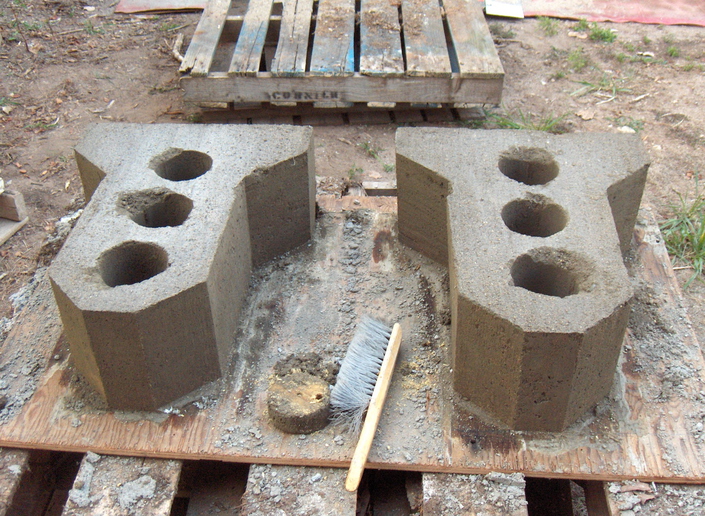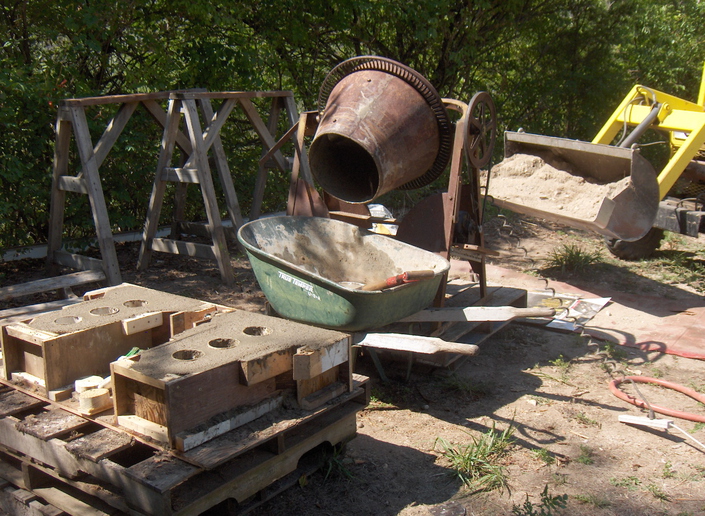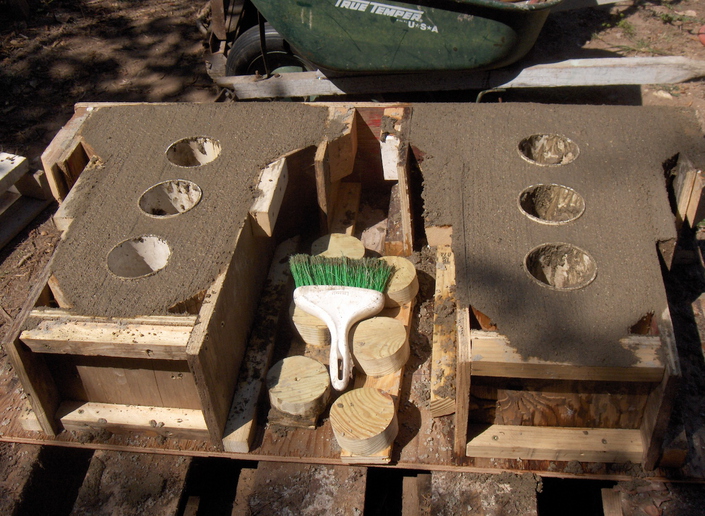You should upgrade or use an alternative browser.
- Thread starter Geo-TH,In
- Start date
Anonymous-0
Well-known Member
portable post holes.....
Anonymous-0
Well-known Member
(quoted from post at 13:20:47 08/23/12) pedestals for equestrian hurdles?
Prolly got something there.... Sure wouldn't wanna lug them things around an arena tho.....
Anonymous-0
Well-known Member
Geo-TH,In
Well-known Member
The boss has a split rail fence made the old fashion way, v-shaped and made from native locust. These are going to be above ground fence posts. Can't buy post holes at the Menards and there are too many tree roots to think of drilling a hole. Hope it works out. Hope I can pull the 4 inch pcv out and reuse. I put a handle inside the pipe and twisted it a few times.
This was too easy. I thought no one would guess it.
Congrats to Dave2.
George
Anonymous-0
Well-known Member
I'd leave the plastic in there myself.... May be better than having the wood touching the cement????
Let me know how they work, maybe a pic of the fence also? I could put something like that to good use....
Geo-TH,In
Well-known Member
The sand and gravel is free, only expense will be the portland cement.
Plan to put a chain in the holes and lift with the little guy.
It may take months to get these posts mass produced. Will have to make more forms too. Forms are made from used lumber. The first set of forms took about 4 hours to design and build. Next set will be faster.
George
Tracy Brown
Member
flying belgian
Well-known Member
Walt Davies
Well-known Member
IHcollector_94
New User
Anonymous-0
Well-known Member
Geo-TH,In
Well-known Member
JR suggested oil, did that.
JM suggested wax paper, may try.
Learned that the screw heads holding the forms to the plywood should be covered with grease to keep the concrete and sand out.
Learned the plastic sleeves are not perfect cylinders. Did a little damage the last inch.
I have a few ideas to make the cylinder extraction work better.
Going to get more plywood. Allow the posts to set for a few days while I make more using the two forms I made.
If there is a problem with strength, I'll make the mix a little stronger.
BOSS IS HAPPY WITH THE DESIGN AND THE LITTLE FLAWS AREN'T AN ISSUE.
George

showcrop
Well-known Member
(quoted from post at 14:03:45 08/23/12) Tape a peice of your wife,s wax paper around the plastic sleves before you pour and you should be abel to pull them out. Could also use tinfoil but wax paper will be cheaper. A lengths of re bar down each side would really finish the deal.
Do they still make waxed paper? My sandwiches were wrapped in it forty-five years ago, but I haven't seen it in years.
Anonymous-0
Well-known Member
They'll pop right out no problem - no damage.
(supposed you could also turn the pvc to do the same thing - but would think solid wood would be easier to fasten to your mold.
Doesn't matter that they're not supporting much weight - you still have to move them, and that's when they'll crack.
Hard to judge the size from the picture - but they look heavy enough to be tempted to put a chain through the top hole to lift it with a bucket... they won't like that.
So I'd either do the rebar or make a few extras to replace the ones that crack.
Geo-TH,In
Well-known Member
As for the sleeves, I do have a lath, but plan to cover the plastic with cardboard. Bet I'll be able to extract without an issue. Also plan to put tar paper on plywood base. I coated everything with used oil, 10x40.
This is just my proto-type and a learning curve. Looking forward to making about 50 of them once the wrinkes are worked out.
If I do use rebar, I'll bend a loop and have it come out the top to give a place to lift from.
The only reason I would use rebar is if I can't move the posts without breaking them. Calculate they will be around 175#.
How does someone change their name to cement mixer or Is this just another thread where??
George
Geo-TH,In
Well-known Member
Your suggestion kept going through my head and tried to figure out how I going to stand them up, 175#+. So I found found some used 1/4 rod, bent it to fit in the form. Put card board around sleeve. About 10 this evening, I'll pull things apart. Think it's going to work well. Going to let then cure for about 5 or 6 days before I try lifting them. I think it will work well. Thanks
George
Disclaimer...none of these ideas have been tried at home, they are only ideas. if you do put them into practice you do so at your own risk, I will not be buying you any concrete to replace what doesn't work out!....LOL
Sam
Similar threads
- Replies
- 13
- Views
- 823
- Replies
- 16
- Views
- 629
- Replies
- 20
- Views
- 1K
We sell tractor parts! We have the parts you need to repair your tractor - the right parts. Our low prices and years of research make us your best choice when you need parts. Shop Online Today.
Copyright © 1997-2024 Yesterday's Tractor Co.
All Rights Reserved. Reproduction of any part of this website, including design and content, without written permission is strictly prohibited. Trade Marks and Trade Names contained and used in this Website are those of others, and are used in this Website in a descriptive sense to refer to the products of others. Use of this Web site constitutes acceptance of our User Agreement and Privacy Policy TRADEMARK DISCLAIMER: Tradenames and Trademarks referred to within Yesterday's Tractor Co. products and within the Yesterday's Tractor Co. websites are the property of their respective trademark holders. None of these trademark holders are affiliated with Yesterday's Tractor Co., our products, or our website nor are we sponsored by them. John Deere and its logos are the registered trademarks of the John Deere Corporation. Agco, Agco Allis, White, Massey Ferguson and their logos are the registered trademarks of AGCO Corporation. Case, Case-IH, Farmall, International Harvester, New Holland and their logos are registered trademarks of CNH Global N.V.
Yesterday's Tractors - Antique Tractor Headquarters
Website Accessibility Policy



